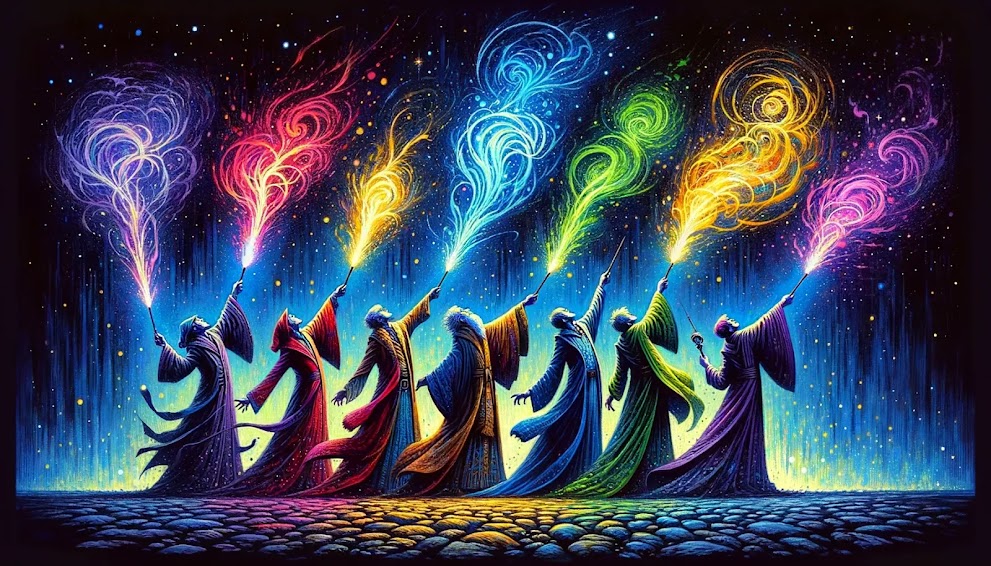Unveiling the 10 Most Powerful Ceremonial Magicians of All Time
Ceremonial magic, a practice that utilizes rituals, symbols, and invocations to harness supernatural powers, has witnessed the rise of extraordinary individuals throughout history. These legendary figures have left an indelible mark on the occult world through their mastery of arcane arts and their ability to invoke profound spiritual forces. In this blog, we delve into the lives and achievements of the ten most powerful ceremonial magicians of all time.
King Solomon
One of the earliest and most revered ceremonial magicians, King Solomon's reputation stems from biblical and mystical accounts of his wisdom and mastery over spirits. According to tradition, Solomon had control over demons and used their powers to build his famed temple and acquire immense wealth. His legendary seals and incantations still resonate in modern magical practices.
John Dee
Considered one of the most influential magicians in history, John Dee was an advisor to Queen Elizabeth I and a scholar of mathematics, astronomy, and the occult. Dee's work with the crystal scryer Edward Kelley allowed them to communicate with angels and divine hidden knowledge. His Enochian system of magic, based on the language of angels, continues to inspire magicians today.
Aleister Crowley
Known as "The Great Beast 666," Aleister Crowley was a controversial figure who pushed the boundaries of ceremonial magic. Crowley founded the religious movement Thelema and authored numerous books on occultism, including "The Book of the Law." His exploration of sex magic, tarot, and astral projection cemented his legacy as one of the most influential magicians of the 20th century.
Eliphas Levi
Eliphas Levi, a significant figure in 19th-century occultism, combined elements of ceremonial magic, Kabbalah, and Christian mysticism in his teachings. His widely acclaimed work, "Transcendental Magic, its Doctrine and Ritual," delved into the symbolism and rituals of ceremonial magic. Levi's powerful imagery and philosophical insights continue to shape magical traditions to this day.
Heinrich Cornelius Agrippa
Heinrich Cornelius Agrippa, a Renaissance magician and occult philosopher, made significant contributions to the study and practice of ceremonial magic. His treatise, "Three Books of Occult Philosophy," explored the interconnectedness of natural magic, celestial influences, and ceremonial rituals. Agrippa's works became foundational texts for subsequent generations of magicians.
Israel Regardie
An influential figure in the 20th-century occult revival, Israel Regardie was a British occultist, author, and student of Aleister Crowley. Regardie's most notable work, "The Golden Dawn," compiled the teachings and rituals of the Hermetic Order of the Golden Dawn, an influential magical society. His insights and contributions helped popularize ceremonial magic during the modern era.
Franz Bardon
Franz Bardon, a Czech occultist and Hermetic magician, crafted an extensive system of ceremonial magic known as "The Practice of Magical Evocation." Bardon's work encompassed practical exercises, meditation, and rituals aimed at self-mastery and the attainment of magical powers. His teachings continue to inspire and influence contemporary occult practices.
Samuel Liddell MacGregor Mathers
A co-founder of the Hermetic Order of the Golden Dawn, Samuel Liddell MacGregor Mathers played a pivotal role in the revival of ceremonial magic in the late 19th century. Mathers' translations of ancient grimoires, such as "The Key of Solomon" and "The Lesser Key of Solomon," introduced a new generation of occultists to the rituals and practices of ancient magicians.
Dion Fortune
Dion Fortune, a prominent British occultist and novelist, contributed extensively to the development and dissemination of ceremonial magic. Her works, including "The Mystical Qabalah" and "The Cosmic Doctrine," explored the integration of magical practices with psychological and mystical concepts. Fortune's innovative approach to ceremonial magic influenced subsequent generations of magicians.
Gerald Gardner
Considered the father of modern witchcraft, Gerald Gardner was an influential ceremonial magician who played a vital role in the revival of paganism and the establishment of Wicca as a recognized religious movement. Gardner's magical practices incorporated ceremonial rituals, folklore, and elements of ceremonial magic, making him a significant figure in the modern occult landscape.
The ten ceremonial magicians discussed here represent a diverse range of periods, traditions, and contributions to the occult world. From ancient rulers and biblical figures to modern occultists, these powerful individuals have pushed the boundaries of human perception, expanding our understanding of magic and the mystical arts. Their legacy continues to inspire and influence contemporary practitioners, ensuring that their extraordinary gifts are perpetuated for generations to come.






















